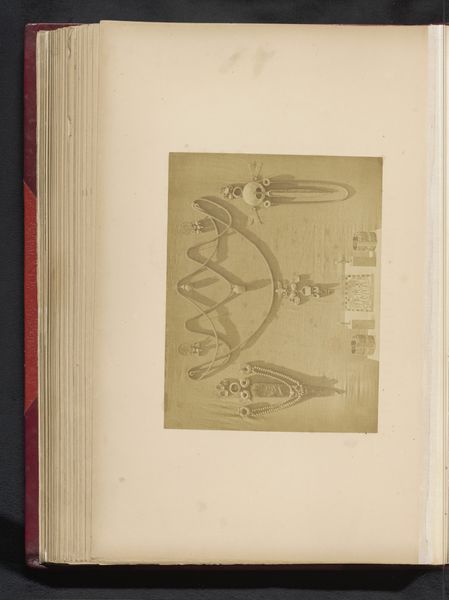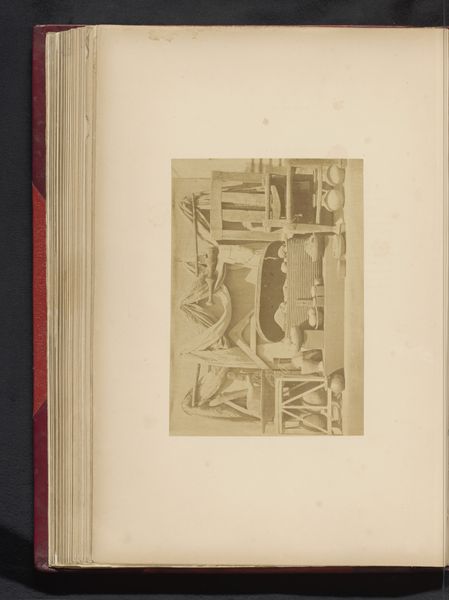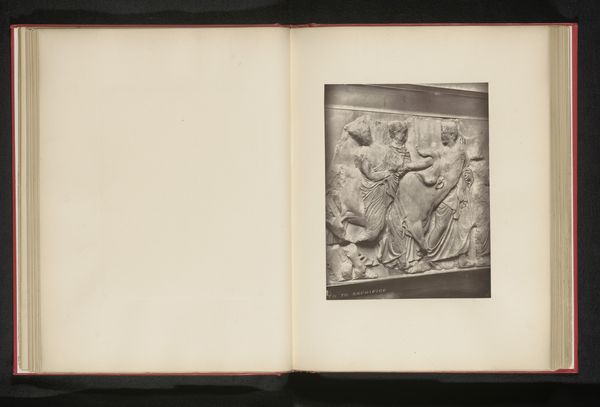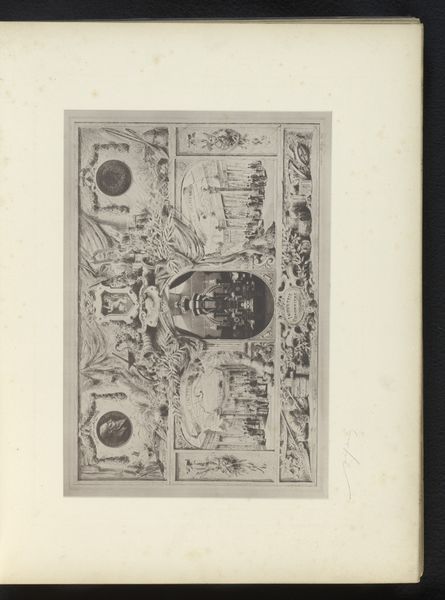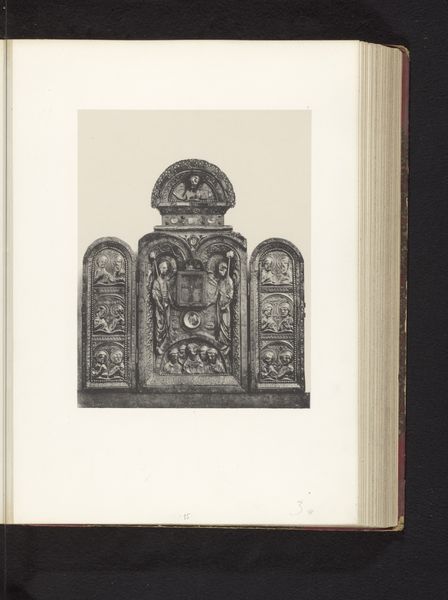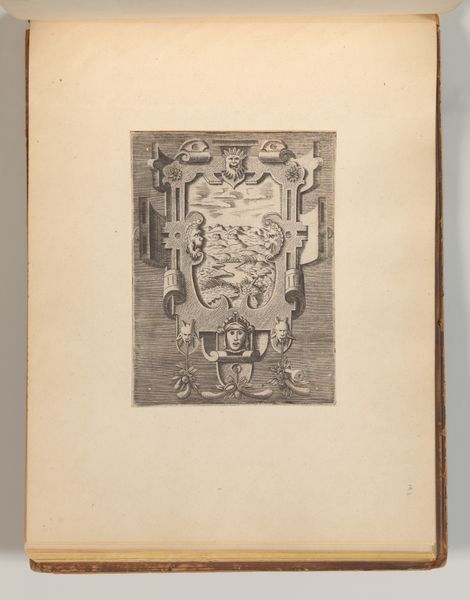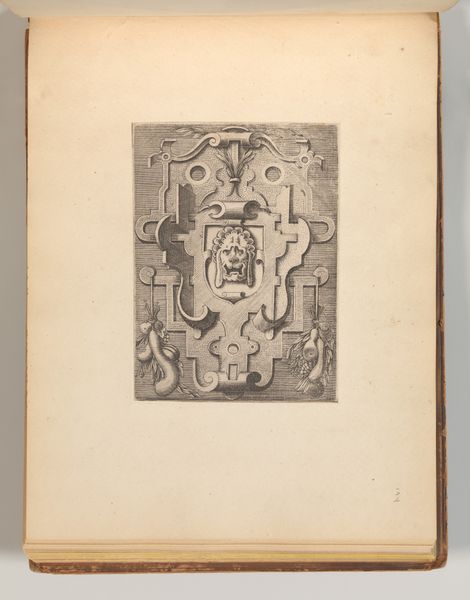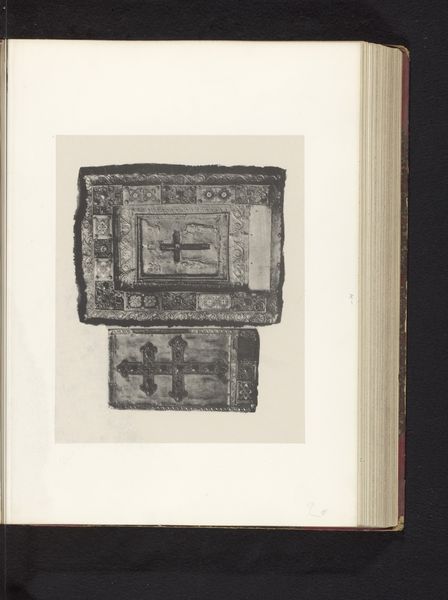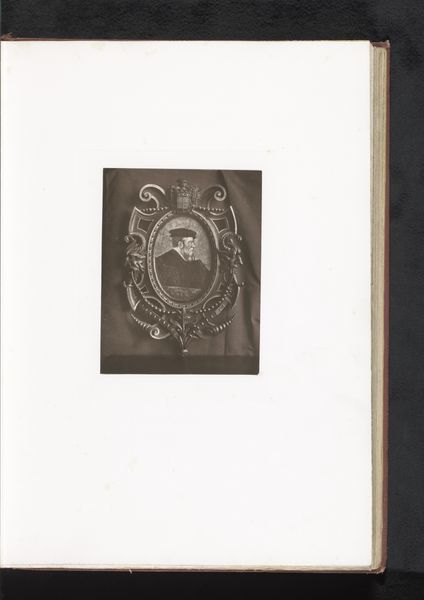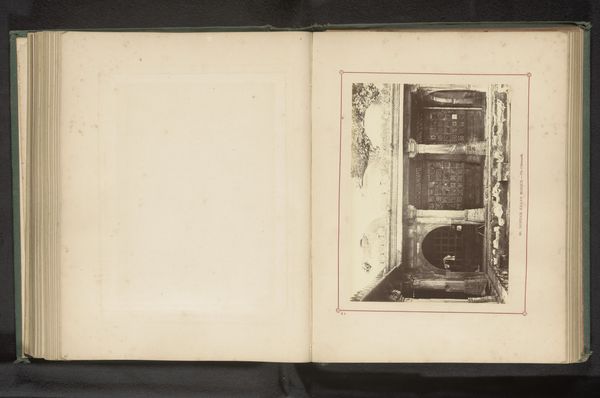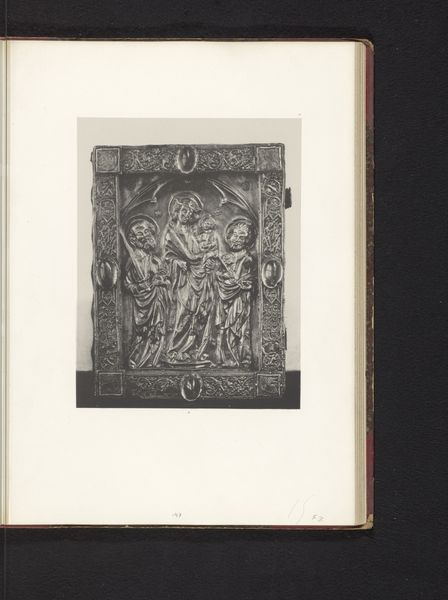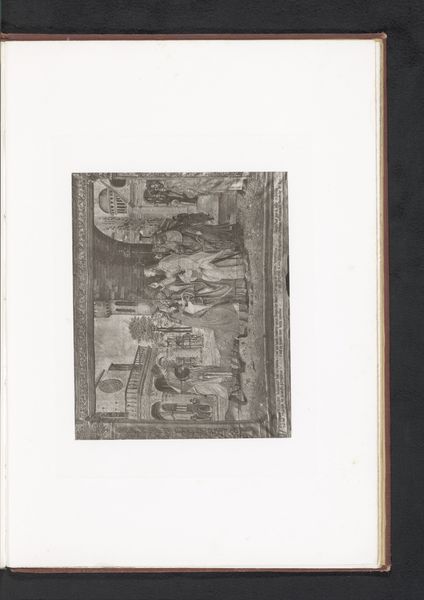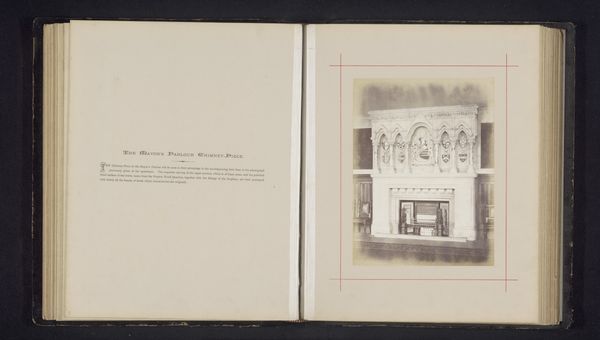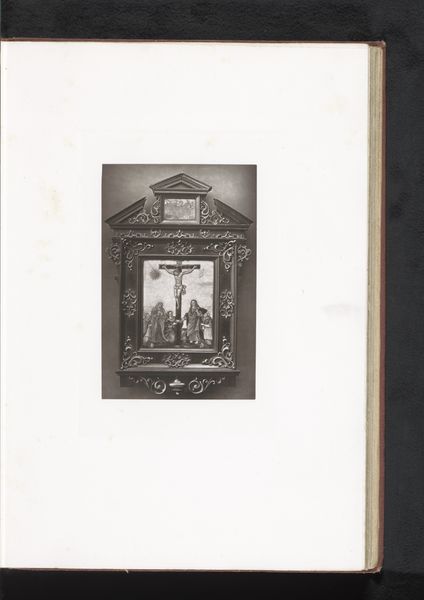
print, photography, engraving
# print
#
ancient-egyptian-art
#
photography
#
ancient-mediterranean
#
engraving
Dimensions: height 241 mm, width 182 mm
Copyright: Rijks Museum: Open Domain
Editor: Here we have an image of "Sieraden in het Boulaq Museum in Caïro, Egypte," created by Hippolyte Délie before 1871, captured through photography and printmaking. The sepia tones and symmetrical arrangement of jewelry and artifacts give it a sense of formality, almost like a still life. What visual aspects stand out to you? Curator: Indeed, the photograph presents a fascinating study in form and arrangement. Consider how the artist utilizes vertical and horizontal lines to structure the composition. Note also the contrasting shapes – the circularity of the jewelry against the sharp angles of the blades. How does the play of light and shadow contribute to the overall effect? Editor: I see how the shadows emphasize the three-dimensionality of the objects. They also create a sort of mirroring effect between the upper and lower registers of the image. Does the symmetry perhaps imply a specific function or purpose? Curator: Precisely. The symmetry is not merely decorative; it speaks to the order and organization of display itself. Observe how each object is given equal weight through its placement and illumination. What visual relationship do you see between the different planes? Editor: Well, everything looks to be evenly lit. I also see similarities between the weaponry, headpieces, and collars, almost suggesting a continuous symbolic relationship between power and status across various artifacts. Curator: Yes, it all adds up to a sophisticated visual vocabulary that reinforces certain values or principles of social rank. Thank you for that observation! By analyzing the visual relationships between shapes, lines, light and dark, one arrives at an insightful perspective of the overall presentation strategy. Editor: Thank you. I’ve never considered interpreting arrangement as being that crucial!
Comments
No comments
Be the first to comment and join the conversation on the ultimate creative platform.
